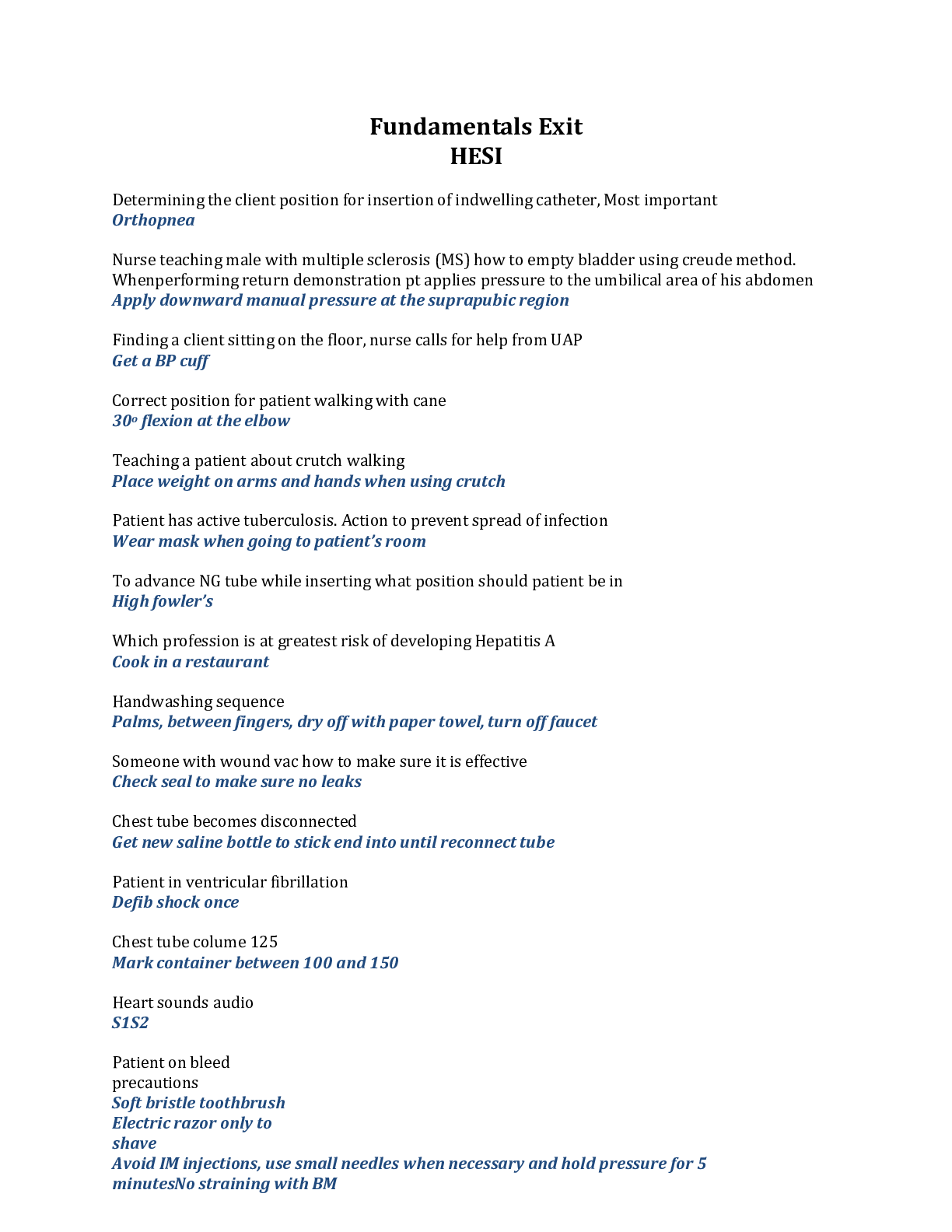Fundamental Hesi Questions. Your Ultimate Study Guide.
Document Content and Description Below
1. Edema Lower Leg: excess of watery fluid collecting in the cavities or tissue of the extremity. • Grading scale: 1+ barely detectable 2+ indentation of less than 5mm 3+ indentation... of 5 to 10mm 4+ indentation of greater than 10mm 2. Blood pressure: the pressure of blood in the circulatory system measured by systolic over diastolic • Average blood pressure readings: Newborn: (1 year): 65-90/30-60mm Hg; (6 years): 87-117/48-64mm Hg Adolescent: (12 years): 110/65mm Hg; (16 years): 119/75mm Hg Adult: (18-60 years): <120/80mm Hg • Checking Orthostatic or Postural hypotension changes: Take blood pressure and pulse with patient SUPINE (lying down forward). Then have patient sit and stand for 1 minute. Retake blood pressure and pulse. Record both sets of numbers. If patient is orthostatic, pressure will decrease (20 to 30mm Hg) and pulse will increase (5 to 25 beats per minute) when sitting or standing. Observe for dizziness, fainting, lightheadedness. Remember patient safety. Record what was found • Korotkoff sounds: sounds of blood pressure Phase I Systole : sharp thud Phase II Systole : Swishing sound Phase III Systole : low thud or knocking Phase IV Diastole : begins fading Phase V Diastole: silence • Cuff should be 20% wider than the diameter of the limb • Creating a FALSE HIGH reading Having the cuff that is too narrow Having a cuff that is too loose Deflating the cuff to slowly Having the arm below the heart Having the arm unsupported • Creating a FALSE LOW reading Having a cuff that is too wide Having a cuff that is too tight Deflating the cuff too quickly Having the arm above the heart • Technique for taking BP in the leg- use popliteal artery. Systolic usually 10-40mm HG higher than using brachial; diastolic remains the same. 3. Rectal Temperature: insert lubricated thermometer probe with probe cover in place into rectum 1-1 ½ inches (2.5-3.5 cm) toward umbilicus. Reading is usually 0.9oF lower than oral temperature. • Advantage: Very reliable • Disadvantage: may lag behind core temperature during rapid changes Should not be used for those with diarrhea or who have had rectal surgery [Show More]
Last updated: 1 year ago
Preview 1 out of 11 pages

Buy this document to get the full access instantly
Instant Download Access after purchase
Add to cartInstant download
We Accept:

Also available in bundle (1)

HESI RN FUNDAMENTALS
HESI RN FUNDAMENTALS 1. When turning an immobile bedridden client without assistance, which action by the nurse best ensures client safety? a) Securely grasp the client's arm and leg. b) Put bed...
By Best Grades 3 years ago
$19
4
Reviews( 0 )
$8.00
Document information
Connected school, study & course
About the document
Uploaded On
Apr 29, 2021
Number of pages
11
Written in
Additional information
This document has been written for:
Uploaded
Apr 29, 2021
Downloads
0
Views
72






